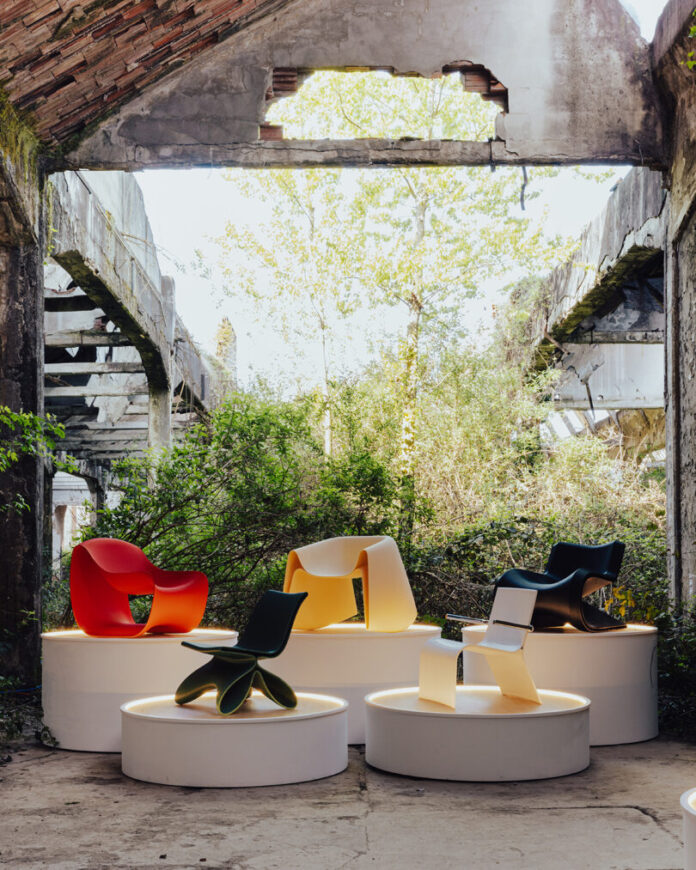Creation requires a cycle of life and death, each inextricably linked to one another. Our earth designs delicate cycles, as do our bodies – life is nothing without a bit of rhythm. At Salone de Mobile this year, as hundreds of thousands flocked to the palazzos of Milan, PORTAL by Decibel, in collaboration with Vizcom and Caracol, was stationed in the former SNIA factory, light peeking through the forgotten beams and missing walls, where overgrown nature became the backdrop. A new location for Alcova debuting in 2025, the venue adds a special layer of meaning to the exhibition, themes of creation on display as viewers watched a 15-foot robotic arm 3D print furniture in the midst of natural decomposition, with a full chair completed at the end of each day. As the 10 chairs began to fill the space, one by one, an intriguing dialogue is realized between the sculptural pieces and crumbling concrete. Featuring designs by Karim Rashid, noknok, Philippe Bietenholz, Willo, Brett Akop, Andrew Schainker, Deniz Aktay, and Charles Birshaw, a collaborator on the project, PORTAL makes us wonder what’s next for the young brand.
Photo: Courtesy of Decibel
Decibel partnered with Vizcom, Caracol, and industrial designer Charles Birshaw for the exhibition. “PORTAL is about breaking down barriers – between concept and creation, continents and collaborators,” says Adam Hecht, co-founder of Decibel. “With Vizcom and Caracol, we’re showing what’s possible when designers are empowered by access to technology.” Ten dynamic forms, all printed in recycled material with thoughtful consideration for circular design, each enjoyed a spotlight on their own podium, bathed in the sparkling Italian afternoon sun. Design Milk had the opportunity to talk with Hecht, for an in-depth look at what makes PORTAL so transformative.
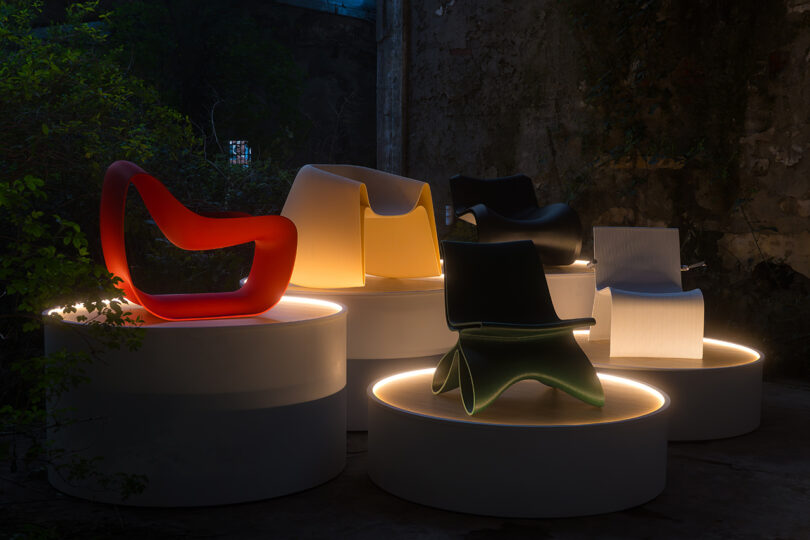
Photo: Courtesy of Decibel
How has the process of circular design fit into your philosophy regarding additive manufacturing, and building Decibel as a brand?
What we’re working towards is not just facilitating the designs, which are really important to get any sort of attention, excitement, and awareness, but you need something to act as the vehicle for the mission. The separate design components are really valuable, but on a deeper level it’s a conversation around infrastructure that’s what we’re trying to get at. This is really where the momentum will have the greatest impact when it comes to sustainability. There’s infrastructure in terms of processing recycled materials, there’s infrastructure in terms of collecting designs, and reprocessing or rereleasing them to be the best they can be. For example, demand drives advancement in the US when it comes to material and R&D, and developing better bioplastics that don’t need to be broken down because they’ll biodegrade in landfills. If nobody’s asking for bioplastics, they’re going to move a little bit slower, we won’t have as much access. So we can build demand by starting with using recycled waste streams from industrial waste stream, and build smart systems that scale.
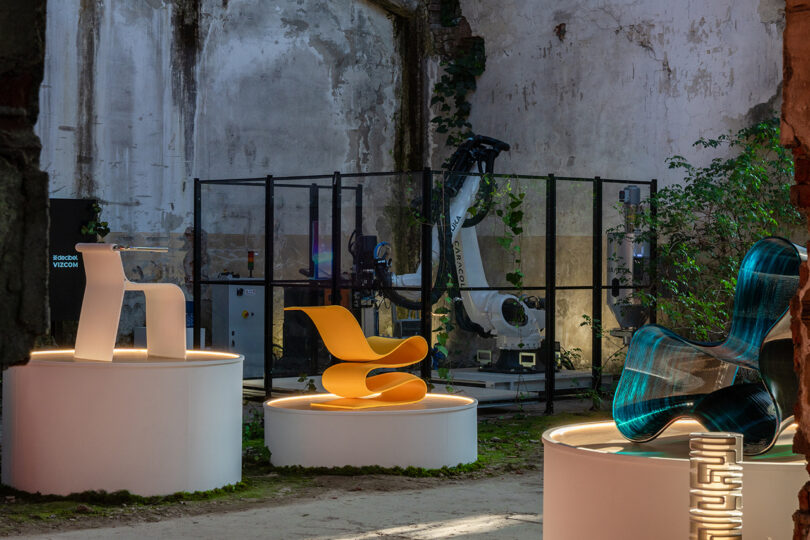
Photo: Courtesy of Decibel
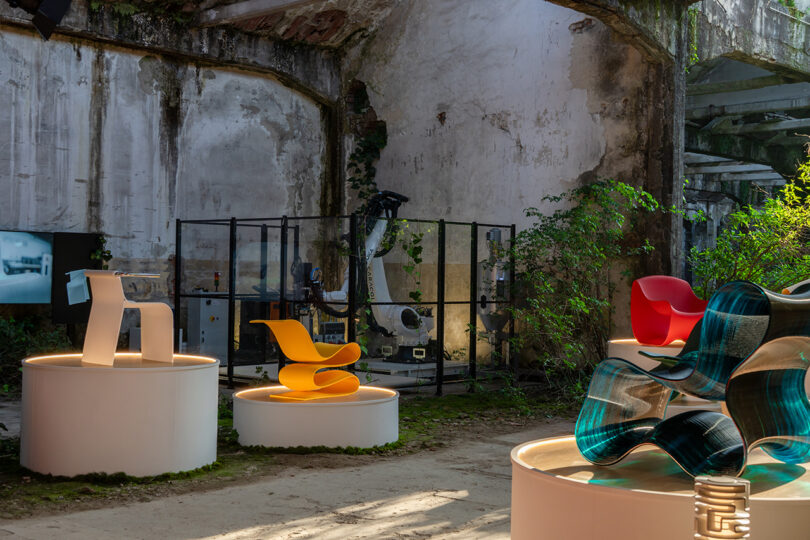
Photo: Courtesy of Decibel
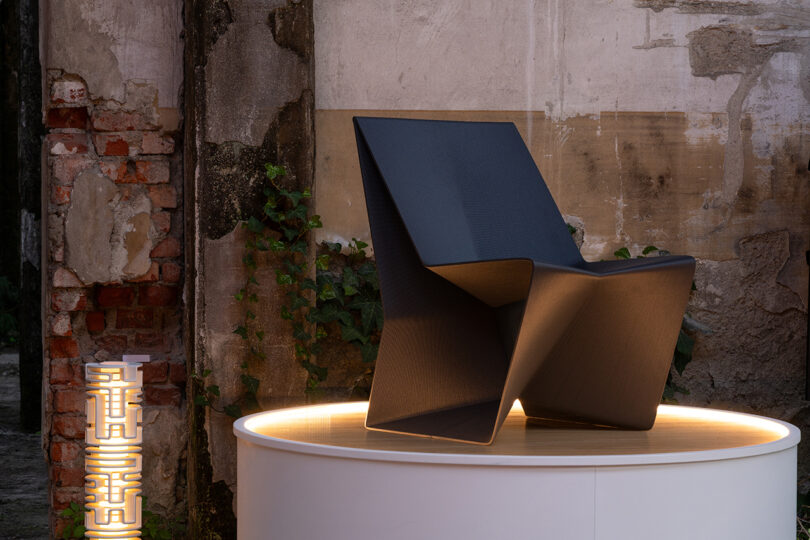
Photo: Courtesy of Decibel
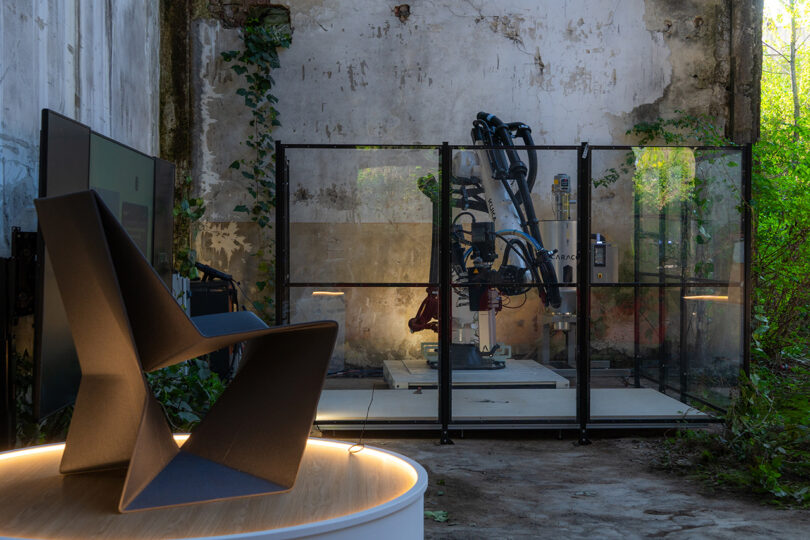
Photo: Courtesy of Decibel
Good systems design is essential to keeping the lights on – who are the key players in your system?
I would say that there are four partners – we have the designers, helping to drive demand, we have the production partners, helping to actually create the pieces, next the recycling and material engineers, and then the fourth tier is commercial customers. Whether that’s other manufacturers, architects, designers, individuals, everybody is obviously very important to that equation. It’s very hard to do any of this, and so those four groups just need to work very closely together for the whole system to work well.
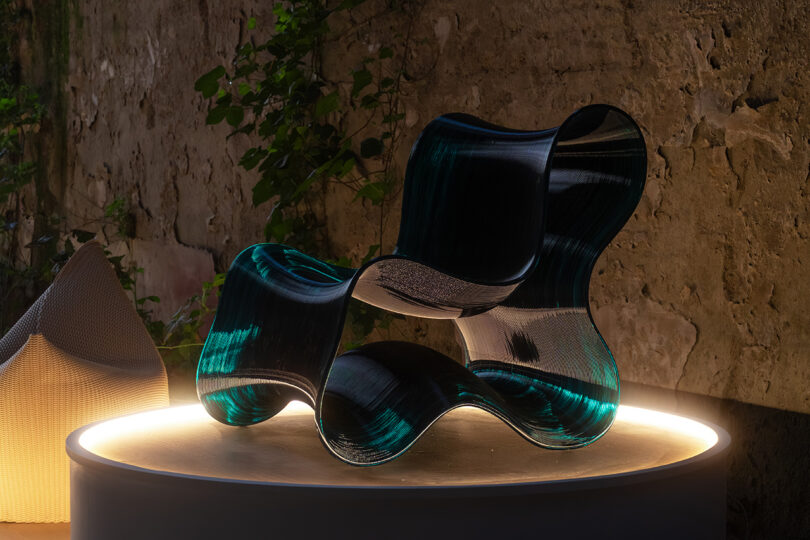
Photo: Courtesy of Decibel
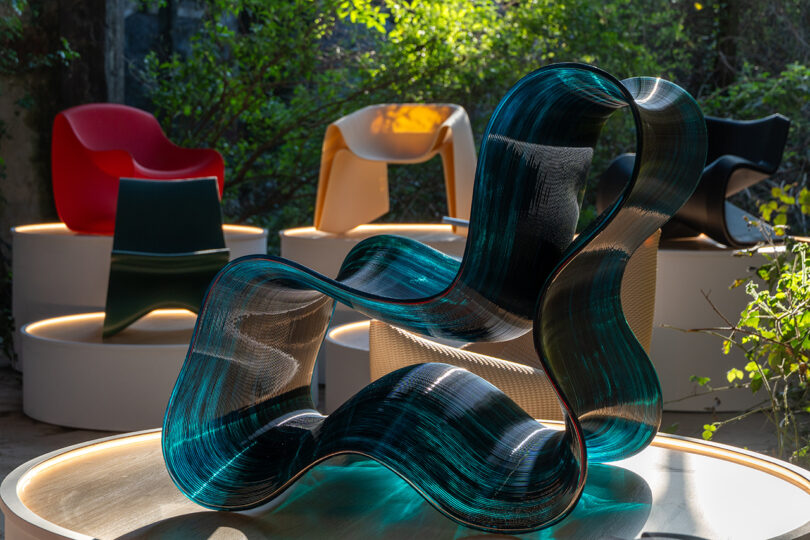
Photo: Courtesy of Decibel
Collaboration is so integral to understanding PORTAL. How does the dynamic at Decibel shine through in the exhibition?
We’re a small team. We don’t have investments, and so everything we do has to be strategic. We’re doing this because we want to. This is not a standard business, it’s something that’s really meaningful to us. Because of that, we’ve been able to take the route of collaboration – working with designers that already have impressive portfolios, and also working with younger designers because it helps to uplift everyone, we all become a part of the same ecosystem. This is extremely valuable for us, it’s really important to create a platform that supports designers and creates connections between designers and industry. This will ultimately create more demand for sustainable products, so we’re working with existing furniture designers and smaller brands to keep things fresh, and we’re also working with larger manufacturers to create a larger impact.
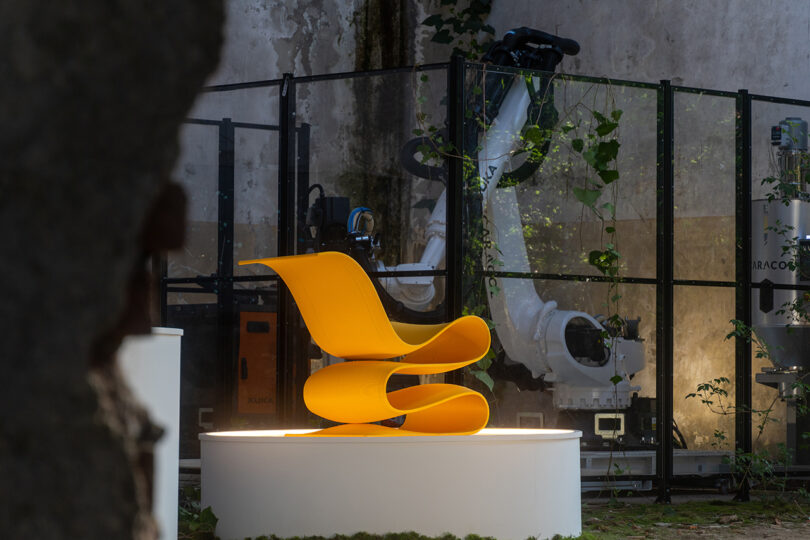
Photo: Courtesy of Decibel
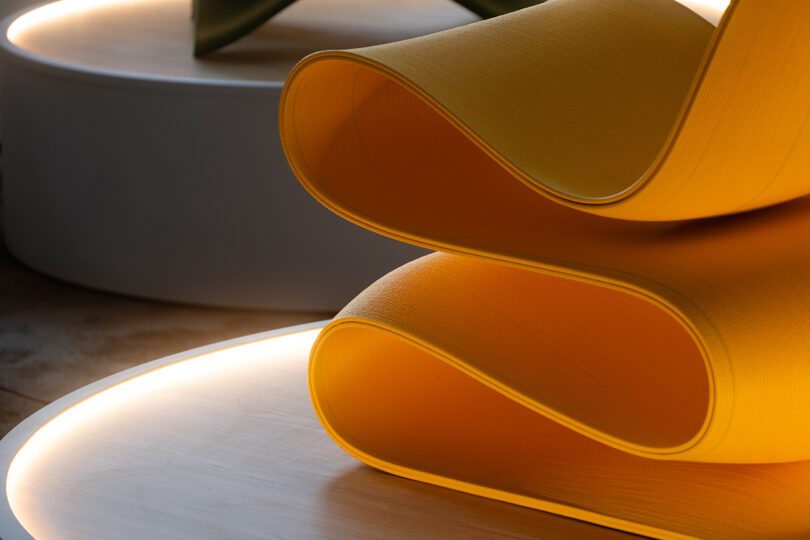
Photo: Courtesy of Decibel
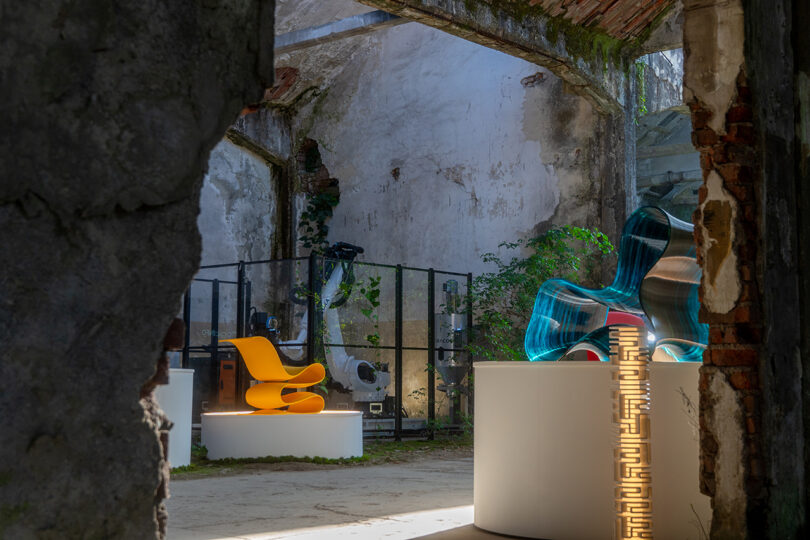
Photo: Courtesy of Decibel
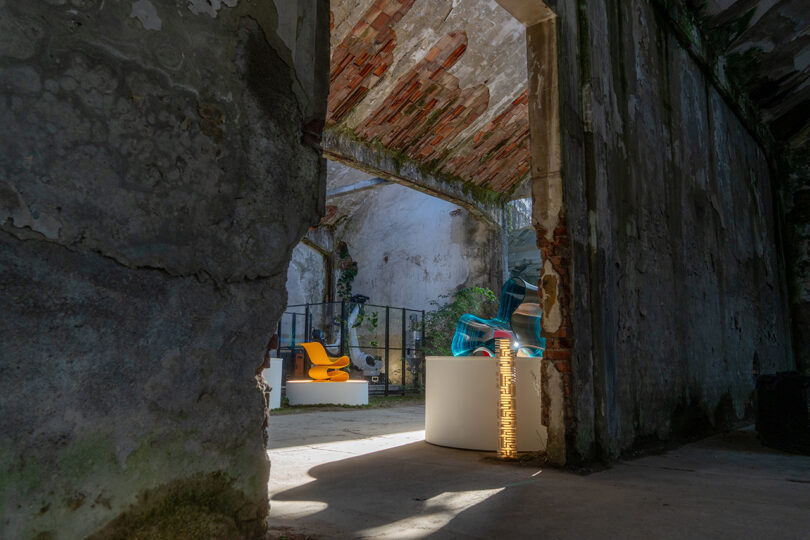
Photo: Courtesy of Decibel
By investing heavily in partnerships and collaboration, Decibel is making moves in the additive manufacturing industry. Providing access for designers, architects, and manufacturers to circular design methods helps reduce impacts on the planet, and ultimately the bottom line as well. Just as it’s namesake measures sound, so does Decibel in its own way, amplifying sustainable practices worldwide.
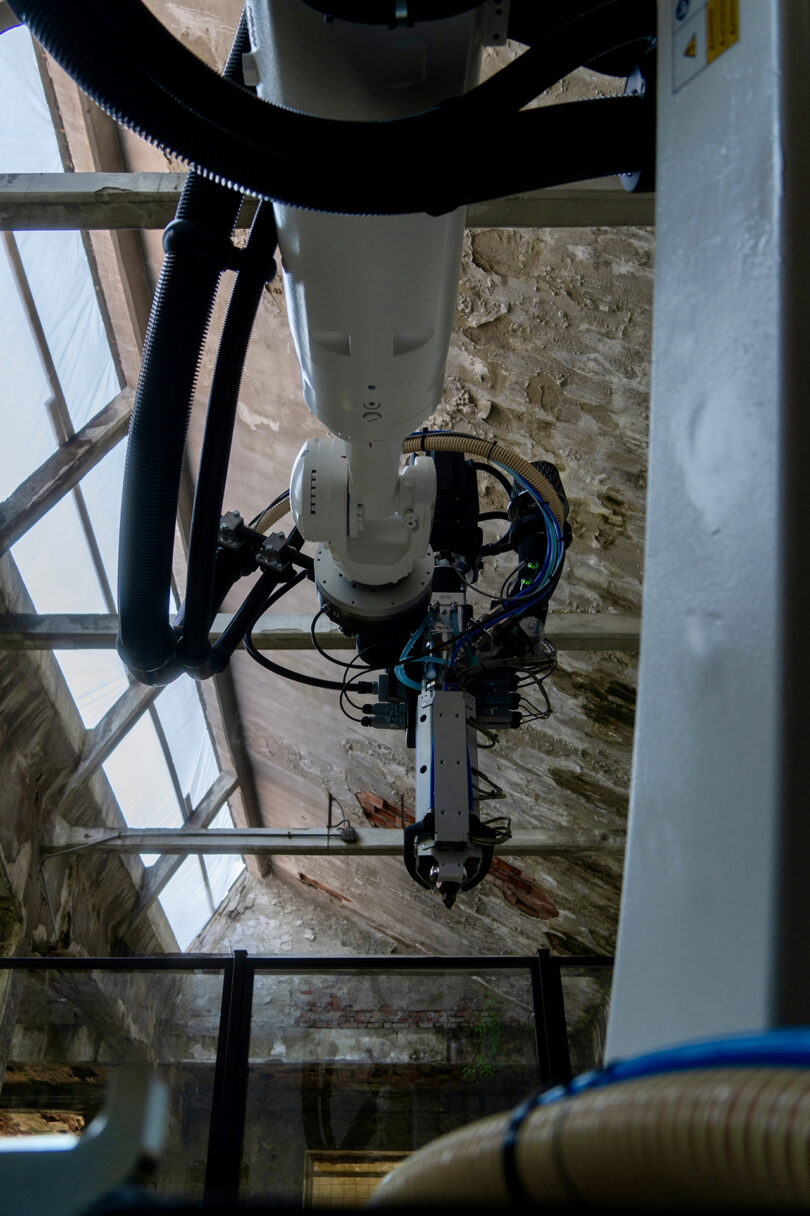
Photo: Courtesy of Decibel
Watch the 3D printer in action:
To learn more about the PORTAL Exhibition and the nine chair designs, visit decibelmade.com.
Photography courtesy of Decibel.
